
Second Cowlitz Smelt Dip Possible; 8,600 Anglers Harvested 54,000 Pounds On Thursday
By MD Johnson
Some people go to the ballpark for the nachos. That’s me. Some go to the county fair for the Italian sausage sandwiches and elephant ears. Again, me.
And some go to the Cowlitz River in Southwest Washington during the month of February for the social aspect and carnival atmosphere that is – drum roll, please – smelt dipping. And that’s precisely why I love, and I mean absolutely love, smelt dipping.

It’s not for the smelt; heck, I don’t eat them. Fried. Smoked. I don’t eat ’em. Oh, I’ll use them for sturgeon bait, if we have a Lower Columbia keeper sturgeon season (and in all likelihood we won’t in 2024, but catch-and-release remains open), but other than that, I’m perfectly content to either dip a few or just let the little silver fish wiggle their way upstream to bring forth the next batch of Thaleichthys pacificus.
That’s fancy talk, by the way, for smelt, also known as eulachon.
And so it was that the three of us – Julie, my wife; her brother, Gordon; and myself – found ourselves at Gearhart Gardens on the edge of Longview on the morning of Thursday, February 15, along with an estimated 8,597 other smelt hunters, hoping to capture at least a handful of the little fish.
A couple days earlier, I’d gotten the word via email from the Washington Department of Fish and Wildlife that a dip would indeed be allowed, if only from 8 a.m. to 1 p.m. and ONLY from the Highway 432 Bridge near Kelso (or just downriver from Gearhart Gardens) upstream to the Al Helenberg Memorial Boat Ramp located, wrote the department, “approximately 1,300 feet upstream of the Highway 411/A Street Bridge in Castle Rock.”
Pretty cut ’n dried parameters, but more on that later.
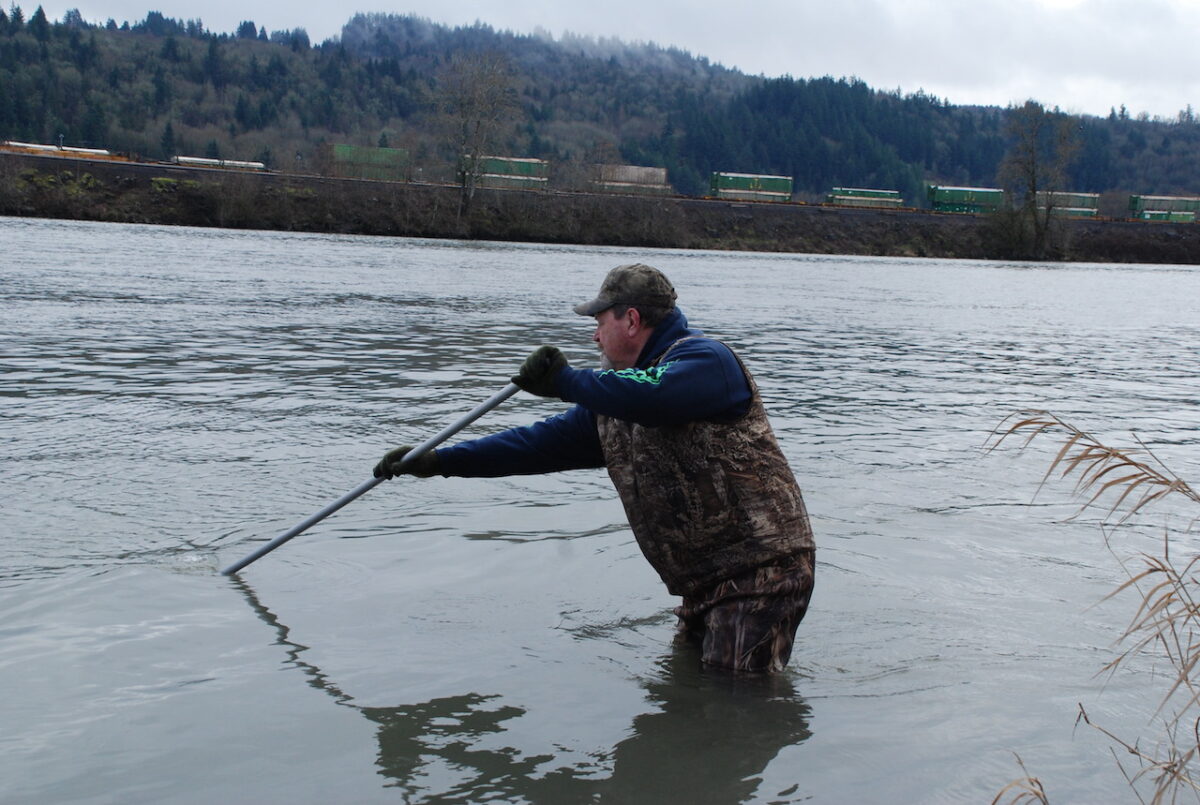
Gearhart was unusually quiet for a smelt day; however, that was, we’d learn, because the bulk of the action, along with the bulk of the limits, was taking place upriver, or, according to Laura Heironimus, WDFW’s smelt, sturgeon, and lamprey lead, “from the Camelot area to Castle Rock.”
Again, more on that in a minute.
Arriving at river’s edge, we found ourselves working the current between Luke and Emmy Nordgaard, a father/daughter duo from Carson, Washington, and Rick Carney, the owner of Oregon Roots, an award-winning indoor/outdoor cannabis producer with headquarters in Banks, Oregon. They were, we quickly discovered, absolutely wonderful people.
Emmy, 14, was a hoot; outgoing, always smiling, and determined, she told us, to own her own business after graduating from college.
“My one sister,” she said, “is going to be a vet. And the other one is going into the medical field.”
Most encouraging, I would say, coming from a sixth-grader.
Carney, as he told us, had just driven 90 minutes to dip the Cowlitz before heading up to Mount Hood to spend the rest of the day snowboarding.
“I have fresh powder waiting on me,” he said.
Him, too. Smiling. Talkative. Friendly.
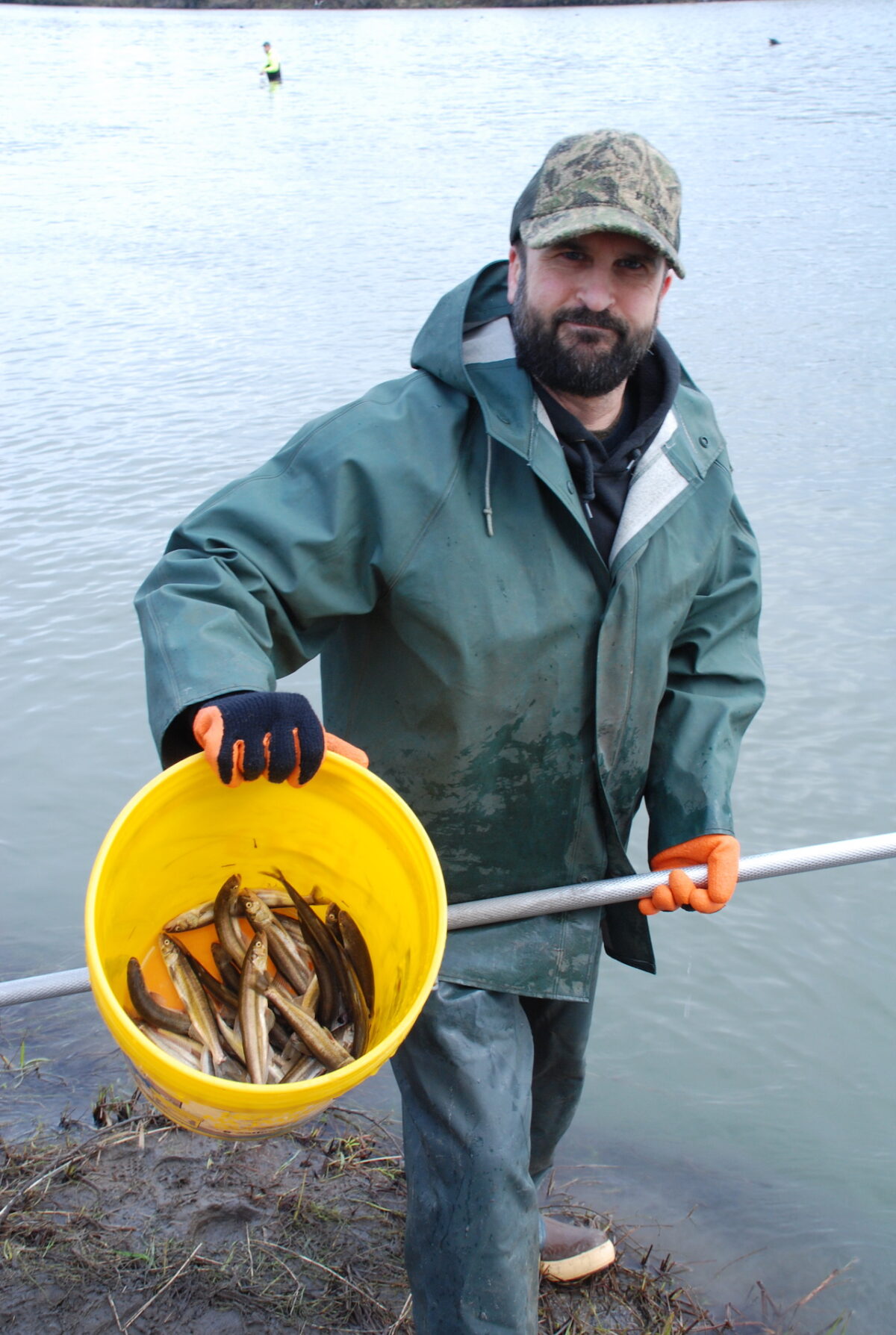
And that’s why I love smelt dipping. The people.
I saw no angry people Thursday. Folks smiled. Laughed. Helped each other.
You wanna know how many times I thought about Russia reportedly working on a nuclear weapon capable of knocking out our communications satellites? NONE. Not once.
Smelt rule!
So there you have it, but, lest you think it was all fun and games and M.D. Johnson’s random thoughts, I did have an opportunity to spend just a couple minutes with WDFW’s Heironimus, admittedly very harried on the day following the dip, and ask her a few questions about the day and the odds of a future opener.
“We estimate about 54,000 pounds of smelt were harvested,” she reported. “And that was 8,600 angler trips, again, an estimate.”
Angler trip, I asked? An angler trip, she explained, are “individual people involved in the fishery.”
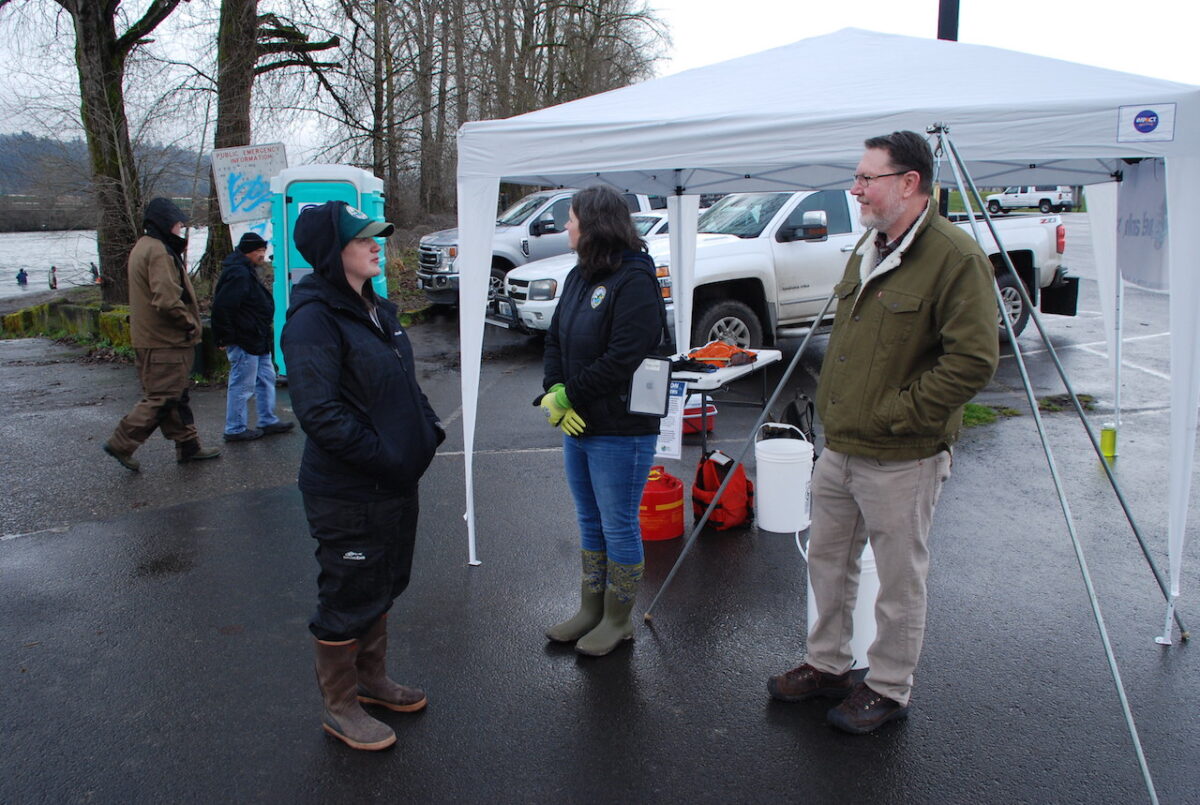
Heironimus explained how WDFW, aboard boats, will travel up and down the Cowlitz counting the number of people actively deploying nets for smelt every hour throughout the whole of the open area.
“Then,” she said, “we do our interviews where we ask how many people in the party, and how much (smelt) they harvested.”
Eventually, thanks to the wonders of mathematics, agency personnel will arrive at “how many fish per hour per person,” as an average. That number, then, will be expanded to include the entire open section of the river.
“It is an estimate,” Heironimus reminded folks, “but it’s not possible for us (WDFW) to interview all 8,600 people out there.”
Perhaps Mother Nature knows why, but it always seems like one section of the Cowlitz is more productive than another on any given dipping day, and this proved to be the case on February 15.
“At Gearhart (Gardens),” Heironimus began, “we did see some limits, but it took people maybe four hours to get a limit, whereas at Camelot (upriver) during the middle of the day, we had some people get limits in about 15 minutes.”
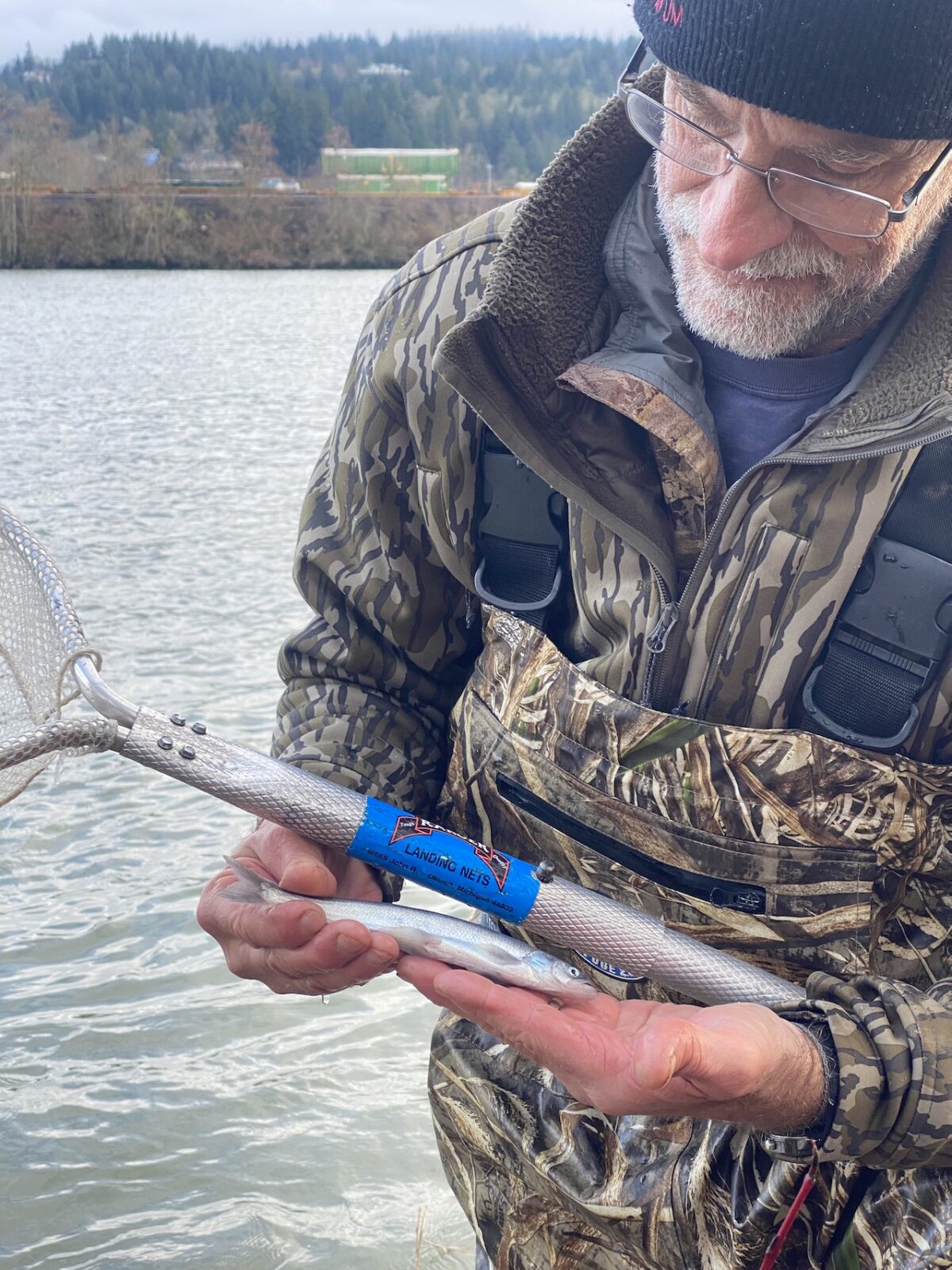
Curious, I asked Heironimus if she had any idea why one section might hold more fish on any one given day.
“Sometimes, the river is just chock-full of fish. Others, like (February 15), you have schools of fish pushing through different sections throughout the day. And so what probably happened were fish moved during the night and had passed by the lower section (e.g. Gearhart Gardens) of the river and were moving into that upper section by the time the fishery started,” she said.
Unfortunately, law enforcement issues often go hand in hand with these sort of rare opportunities, and 2024 was no different.
“We didn’t have any issues at Gearhart (because it was slow there),” Heironimus said, “but when I checked with law enforcement this morning (February 16), they did have some issues further upriver.”
Wildlife officers, she explained, handed out approximately 40 citations and seized about 600 pounds of smelt from people. One of the violations was to people fishing above the open area in Castle Rock.
“We’re going to be working on improving our (WDFW) website to help inform people about what the open area is. I’m talking to our enforcement team and discussing better signage or changing that open area to improve that issue. I’m certainly not trying to create a problem; people just didn’t understand where the boundaries are.”
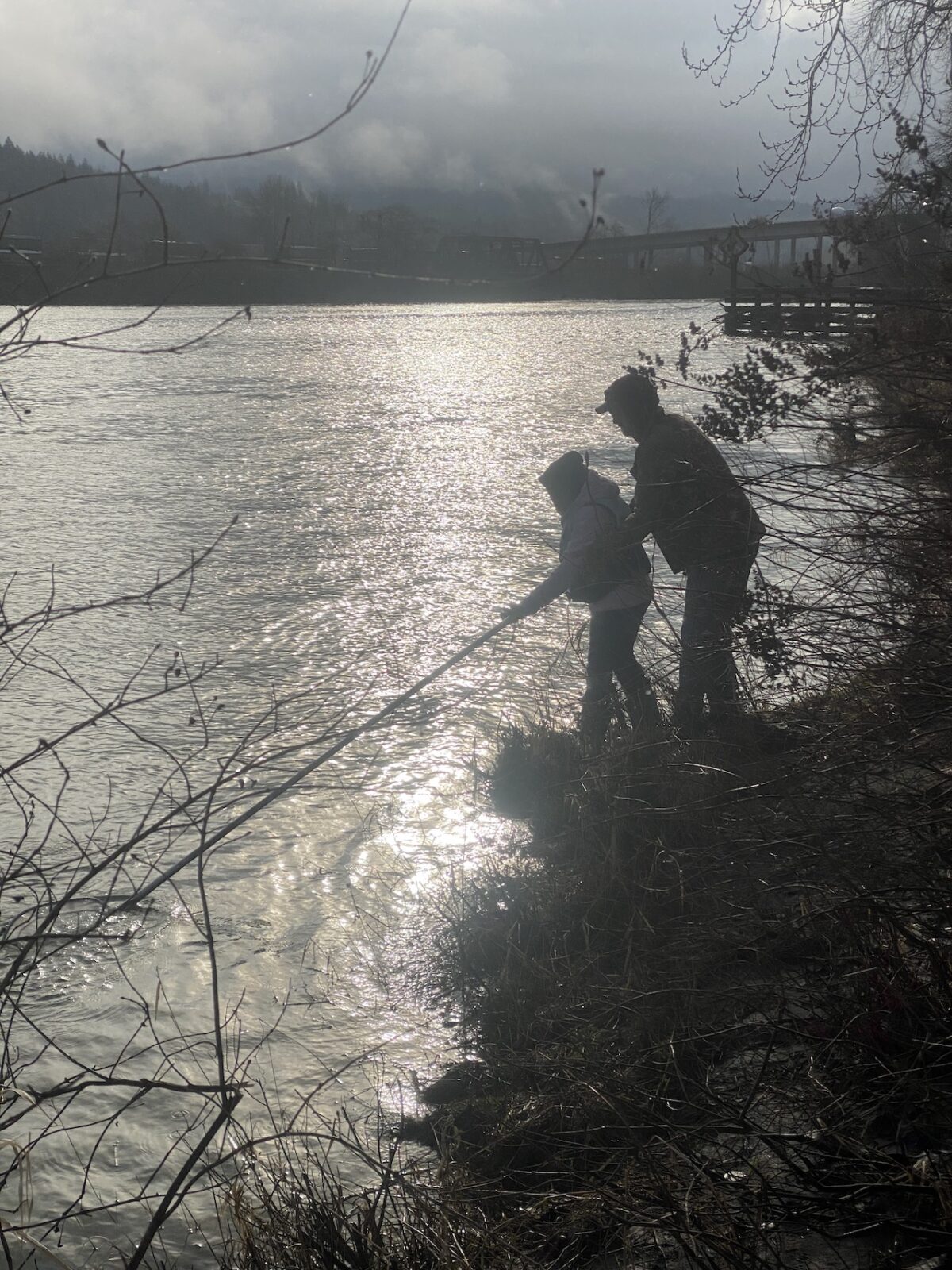
So, Laura, will it be one-and-done for ’24 in terms of smelt, or might there be another morning dip on the horizon?
“We’re looking at these numbers,” said Heironimus, “and the big thing is making sure these fish are still going to be in the river. We’re planning to do some test-dipping this weekend (2/17-18) and on Tuesday (2/20), and hopefully we’ll be able to decide something on Tuesday. The concern is if we set a fishery right away, there won’t be any fish (in the river) to catch. Smelt can be real flashy and the river wasn’t chock-full like we’d hoped. But we’re going to keep monitoring the fishery. And we hear people’s wants and needs for a weekend fishery, so it’s something on our radar. But I think there should be room for another fishery, if we can find a day when there’s going to be fish in the river.”
And in conclusion and to quote a wise and dear friend. “There it is. In a world going to (the dogs), we had smelt.”
And, at least on February 15 for a few short hours, we did.
